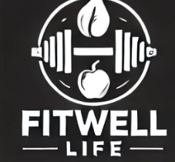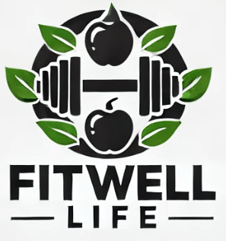Fitness Over Forty: A Journey to Lifelong Health
1/1/20258 min read


Understanding the Importance of Fitness at 40+
Reaching the age of 40 marks a significant milestone in life, one that often brings about reflections on health and fitness. It is crucial to recognize that maintaining physical fitness beyond this age is essential for enhancing overall well-being, longevity, and quality of life. Numerous studies illustrate that regular engagement in fitness activities can lead to substantial health improvements, especially in men, who face various age-related health challenges. These include increased risks of cardiovascular diseases, obesity, diabetes, and other chronic conditions.
The importance of fitness in this age group cannot be overstated. Engaging in a well-rounded fitness regimen, which includes cardiovascular exercises, strength training, and flexibility activities, has been shown to mitigate health risks. For instance, regular physical activity can help manage weight, lower blood pressure, and improve cholesterol levels. Furthermore, a consistent fitness routine can enhance mental health, reduce symptoms of anxiety and depression, and boost cognitive function, which often begins to decline in the 40s.
Statistics reveal concerning trends among men as they age. A report from the Centers for Disease Control and Prevention (CDC) highlighted that nearly 40% of men aged 40 to 59 are at risk for obesity, directly impacting their overall health and fitness levels. Additionally, heart disease remains the leading cause of death, accounting for one in four deaths among men in the United States. By integrating fitness into daily routines, men can significantly decrease their susceptibility to these health issues.
Ultimately, the journey toward lifelong health begins with taking proactive steps in fitness at 40 and beyond. Developing a sustainable fitness plan tailored to individual capabilities and goals is imperative. By prioritizing physical health during this period, individuals not only enhance their life quality but also pave the way for an active, fulfilling future.
Setting Realistic Fitness Goals for Your 40s and 50s
As individuals transition into their 40s and 50s, setting realistic fitness goals becomes crucial for maintaining health and vitality. At this stage of life, it's essential to consider various factors that can influence one's fitness journey, including past exercise habits, current physical capabilities, and overall lifestyle choices. By thoughtfully assessing these elements, individuals can establish attainable fitness objectives that support sustained engagement in physical activity.
First and foremost, evaluating past fitness history can provide insight into what is feasible and enjoyable. If a person has consistently participated in sports or fitness activities, it may be more manageable to set aggressive goals. Conversely, if one comes from a more sedentary background, it is prudent to start with achievable easier targets. Current fitness level plays a significant role as well. Individuals should assess their endurance, strength, flexibility, and any existing health conditions when determining appropriate benchmarks. Consulting a healthcare provider for clearance, especially if there are pre-existing conditions, is advisable.
Another vital aspect of goal setting is lifestyle considerations. Factors such as work commitments, family obligations, and social engagements need to be considered to ensure that established goals can be realistically integrated into daily routines. Small, incremental changes can lead to significant long-term improvements. For instance, instead of aiming to complete a marathon within a year, a more practical goal might be to start with walking 30 minutes three times a week. These smaller milestones can help build confidence and motivation, which are essential for long-term adherence to a fitness regimen.
Finally, tracking progress and celebrating each achievement, no matter how minor, can significantly enhance motivation. By keeping fitness goals aligned with one’s abilities and circumstances, individuals in their 40s and 50s can foster a positive and sustainable approach to lifelong health.
Effective Workouts for Middle-aged Men: What You Need to Know
As men enter the age range of 35 to 55, their fitness needs and abilities begin to evolve. It is crucial for middle-aged men to engage in workouts that are not only effective but also safe, catering to their unique health considerations. A balanced workout regimen for this demographic includes strength training, cardiovascular fitness, flexibility, and proper recovery techniques.
Strength training should form the foundation of any fitness program for men in this age group. It helps combat muscle loss that naturally occurs with aging and elevates metabolism. Incorporating compound movements, such as squats, deadlifts, and bench presses, can maximize efficiency and overall strength. A routine could consist of two to three strength sessions per week, focusing on major muscle groups and allowing at least 48 hours for recovery between sessions.
Cardiovascular fitness is equally important, given the increased risk of heart disease as men age. Aerobic exercises like brisk walking, cycling, or swimming improve heart health and can be performed at moderate intensity for 150 minutes weekly. High-Intensity Interval Training (HIIT) is also an option, emphasizing short bursts of effort followed by recovery periods to enhance cardiovascular conditioning.
Flexibility and balance workouts, often overlooked, should not be disregarded. Integrating yoga or Pilates into the routine can facilitate improved flexibility, muscle relaxation, and injury prevention. It’s advisable to incorporate these sessions at least once a week.
Finally, recovery techniques, including rest days and adequate sleep, are critical components for effective workouts. Listening to one’s body and adjusting intensity as needed can ensure long-term adherence to a fitness routine and promote overall well-being. By focusing on these diverse aspects of fitness, middle-aged men can achieve a healthier lifestyle that supports aging gracefully and maintaining lifelong health.
Nutrition Essentials: Fueling Your Body for Optimal Performance
As men age, their nutritional needs evolve significantly. A well-balanced diet becomes crucial for maintaining energy levels, muscle mass, and overall health. Focusing on macronutrients such as carbohydrates, proteins, and fats, as well as essential micronutrients, is imperative for optimal performance and vitality. Carbohydrates serve as the primary energy source, while proteins are essential for muscle repair and growth, particularly as the body becomes more prone to muscle degeneration. Healthy fats are also necessary, providing energy and supporting cellular function.
To effectively support fitness goals, it is vital to prioritize quality sources of these macronutrients. Whole grains, fruits, and vegetables should be the foundation of carbohydrate intake, providing necessary vitamins and minerals. Lean proteins, such as chicken, fish, beans, and legumes, can help in preserving muscle mass, especially when combined with regular exercise. Incorporating healthy fats from sources like avocados, nuts, and olive oil can further enhance overall nutrition, aiding in the absorption of fat-soluble vitamins.
Micronutrients play an equally significant role in maintaining health as men age. Vitamins and minerals like calcium, vitamin D, magnesium, and omega-3 fatty acids are crucial for bone health, immune function, and inflammation reduction. A varied diet rich in colorful fruits and vegetables can help ensure an adequate intake of these vital nutrients. In addition, meal planning is essential for maintaining a balanced approach to nutrition. Structuring meals to include a variety of food groups can help thwart the pitfalls of unhealthy snacking or unplanned eating.
Lastly, timing nutrient intake effectively can enhance recovery and performance. Consuming a balanced meal or snack containing protein and carbohydrates within a few hours post-exercise can aid in muscle recovery. Establishing a regular eating schedule helps manage hunger and optimizes the body’s ability to process nutrients efficiently, supporting both fitness endeavors and general wellness.
Overcoming Common Fitness Barriers for Men over 35
Maintaining fitness can be a significant challenge for men over 35, as various barriers often hinder their journey towards lifelong health. One of the most prevalent issues is time constraints. Many men in this age group may find themselves juggling numerous responsibilities, including career demands, family obligations, and social commitments. As a result, prioritizing fitness can feel daunting. To mitigate this challenge, it is beneficial to adopt strategies that effectively incorporate exercise into daily routines. Simple adjustments, such as opting for active transportation, scheduling workout sessions like appointments, or integrating short bursts of physical activity throughout the day can facilitate a more active lifestyle.
Another common barrier is motivation. As men age, they might experience a decline in enthusiasm for physical activities that they once enjoyed. To combat this, it is important to set realistic and achievable fitness goals, which can help rekindle motivation and create a sense of accomplishment. Engaging in group activities or joining fitness classes can also provide a social aspect that fosters accountability and encouragement. Choosing activities that align with personal interests can further enhance motivation, making fitness a more enjoyable endeavor.
In addition to time and motivation, potential injuries can significantly impact a man's ability to maintain a consistent fitness routine. As the body ages, it becomes more susceptible to injuries due to decreased flexibility and strength. To overcome this, it is crucial to focus on preventive measures such as proper warm-ups, cool-downs, and incorporating strength training exercises that promote joint health. Listening to one’s body and allowing adequate recovery time can prevent setbacks, ensuring a safer and more sustainable approach to fitness. By addressing these barriers strategically, men over 35 can enjoy a fulfilling and effective fitness journey, paving the way for lifelong health.
The Role of Mental Health and Motivation in Fitness
Mental health plays a crucial role in an individual's fitness journey, particularly for those over forty. As one navigates the complexities of aging, the significance of psychological well-being becomes increasingly apparent. A positive mindset not only fosters resilience but also enhances motivation, which is essential for achieving fitness goals. When individuals prioritize their mental health, they set a foundation for success that extends beyond physical transformation.
One important aspect of maintaining motivation is the establishment of intention and purpose in fitness routines. When individuals define clear goals and connect them to their personal values, they are more likely to commit to their fitness journey. This intentional approach instills a sense of accountability and encourages individuals to push through challenges. For instance, when exercise is linked to overall well-being, stress management, or even social connections, it becomes more than just a routine—it transforms into a meaningful practice that aligns with one’s broader life objectives.
Furthermore, incorporating mindfulness techniques can significantly enhance one's mental health and fitness motivation. Mindfulness encourages individuals to focus on the present, reducing anxiety and promoting a more enjoyable experience with physical activity. Techniques such as meditation, yoga, and deep-breathing exercises can foster a better connection between mind and body, ultimately leading to improved performance and greater satisfaction. Stress management through these practices can also help individuals recognize their limits, making it easier to stay motivated and engaged in fitness even when faced with life's inevitable ups and downs.
In essence, prioritizing mental health and motivation is vital for lasting success in fitness endeavors. Cultivating a positive mindset, setting clear intentions, and practicing mindfulness contribute to a well-rounded approach that supports both mental and physical wellness in individuals over forty. By understanding the interplay between psychological well-being and fitness, one can embark on a fulfilling journey toward lifelong health.
Building a Support System for Your Fitness Journey
Embarking on a fitness journey, especially after the age of forty, can be a daunting task. To enhance the likelihood of success and sustainability, establishing a support system is paramount. A well-rounded support network not only provides motivation but also fosters accountability and encouragement, essential components for maintaining a consistent fitness routine. Whether you find support through workout partners, fitness groups, or technology, these connections can make a significant difference in your fitness endeavors.
One effective way to find motivation is by engaging with workout partners. Consider reaching out to friends, neighbors, or colleagues who share similar fitness goals. Having a workout buddy can make exercising more enjoyable and can help ensure that each of you stays on track. Communicating regularly about goals and progress can lead to mutual encouragement, making it easier to overcome challenges that may arise.
In addition to personal connections, joining fitness groups, whether in-person or online, can be incredibly beneficial. Many communities offer group classes, running clubs, or fitness meet-ups tailored for individuals over forty. Engaging with a fitness group not only provides a structured workout environment but also fosters camaraderie, creating a sense of belonging among like-minded individuals. Navigating challenges becomes easier when you're surrounded by a community that shares your aspirations.
Technology also plays a pivotal role in connecting individuals on their fitness journeys. Numerous apps and social media platforms allow users to share their fitness experiences, track progress, and communicate with others who have similar goals. Consider using these resources to join online communities that focus on fitness for individuals over forty. Engaging in discussions, sharing tips, and celebrating achievements can motivate and inspire continued commitment to a healthier lifestyle.
Building a robust support system is a crucial aspect of maintaining fitness over forty. By fostering personal relationships, joining fitness groups, and utilizing technology, you can enhance your overall experience, making the journey towards lifelong health a more manageable and fulfilling endeavor.
This high-intensity interval training (HIIT) workout is designed specifically for men, providing an efficient full-body routine that can be completed in just 15 minutes.
This video aligns well with your blog's focus on fitness for men aged 35-55, offering practical exercise guidance without the inclusion of women, ensuring relevance and appropriateness for your target audience.

Wellness
Your source for health, fitness, and nutrition.
Fitness
Nutrition
© 2024. All rights reserved.


